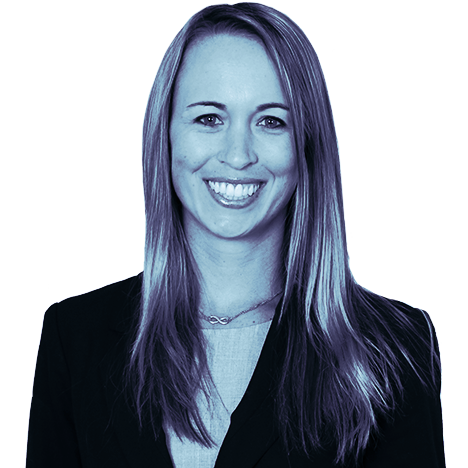
| Our best ideas, quick and curated | FEBRUARY 4, 2022
|
| This week, applying balance-sheet principles to the global economy. Plus, a conversation about what it really means to embrace stakeholder capitalism, and an ambitious goal for zero-carbon shipping. |
|
|
|
| The world has never been wealthier. But how are nations using that wealth? The McKinsey Global Institute came at that question from a novel angle, borrowing a page from the corporate world: the balance sheet. The report, The rise and rise of the global balance sheet: How productively are we using our wealth?, looks at the underlying health and resilience of the global economy after two decades of financial turbulence and more than ten years of heavy central bank intervention, punctuated by the pandemic. It found much to be grateful for, particularly that global net worth more than tripled between 2000 and 2020. |
| A broken link. Yet across ten countries that account for about 60 percent of global GDP—Australia, Canada, China, France, Germany, Japan, Mexico, Sweden, the United Kingdom, and the United States—the historic link between the growth of net worth and the growth of GDP no longer holds. This divergence emerged as asset prices rose, but not as a result of 21st-century trends like the growing digitization of the economy. Instead, the increase mainly reflects valuation gains in real assets, rather than investment in productive assets that drive economies. The most significant component was real estate, which in 2020 accounted for two-thirds of net worth. |
| Paradigm shift. The report delves into whether the expansion of global balance sheets and net worth relative to GDP marks an economic paradigm shift, or if it could precede a reversion to the historical mean, softly or abruptly. One clear way to achieve a soft rebalancing is for companies, individuals, and even governments to redirect capital to more productive and sustainable uses. This would not only support growth and the environment but also protect global wealth and financial systems. |
| How can business leaders respond? Several scenarios are possible, including raising the productivity of the workforce with capital investment that complements rather than displaces employees. Many corporations today have excess liquidity that they could deploy. Leaders of financial institutions, meanwhile, could develop financing mechanisms aimed at matching capital to new growth opportunities while limiting debt creation for asset transactions at ever-rising prices. |
| Shifting priorities. Policy makers, for their part, could encourage rebalancing by removing barriers to investment in the economy and focusing on bridging gaps through sustainability, affordable housing, and other efforts. Tools already exist to propel these endeavors, such as reforming zoning regulations that limit the availability of affordable real estate; pulling tax levers that alter the taxation of capital and property gains relative to income; and getting more serious about carbon pricing and regulation. Assessing the global balance sheet provides a fresh way of looking at the macroeconomic context in which businesses, governments, households, and financial institutions operate, and also serves as a jumping-off point for assessing risks and capturing benefits in the event of a global rebalancing. |
|
|

|
| OFF THE CHARTS |
| The office gets a new look |
| The uptick in remote and hybrid work is causing organizations to rethink how they use their office space. In our survey of senior executives about their current priorities and future plans for transforming SG&A activities, more than 50 percent of respondents said they are optimizing their real-estate portfolios or have already done so. At the top of their list of priorities are flexible desk arrangements and early lease termination.
|
|
|
|
|

|
|
|
| PODCAST |
| The long and short (term) of it |
| Stakeholder capitalism is the buzzy term for business practices that strive to achieve more than profits and a high stock price. But what does benefiting all stakeholders really entail? And how do business leaders put the aspiration into practice? In this episode of the Inside the Strategy Room podcast, two experts lay out the case for stakeholder capitalism and why it continues to matter. “If you are working toward gender parity or mitigating your environmental footprint, that takes time. The markets and your stakeholders will be patient if they know you are making progress,” said McKinsey senior partner Dame Vivian Hunt. “No aspect of business is just ‘trust me and see.’ You need metrics and evidence.” |
|
|

|
| MORE ON MCKINSEY.COM |
| Green corridors: A lane for zero-carbon shipping | Zero-emission fuels and vessels will need to start being deployed at scale over the next decade to achieve full decarbonization of the shipping sector by 2050. This ambitious goal could be catalyzed by green corridors. |
| Are you chasing the right digital assets? | Success in digital M&A requires a clear strategy that guides target selection, due diligence, and integration. Ensuring that targets can fulfill the acquirer’s ambitions calls for companies to adapt how they approach each phase of the deal. |
| Risk and resilience in consumer-goods supply chains | While many companies found they could handle short surges in demand for a specific product, on the whole, consumer-goods supply chains have proved vulnerable to shocks. Here’s how to strengthen them for the future. |
|
|
|
|
|
| WHAT WE’RE READING |
| Anna Pione |
| Anna Pione, a partner in the New York office, leads McKinsey’s consumer health and wellness service line, including the firm’s global research on the Future of Wellness, aimed at better understanding how consumers approach wellness across fitness, health, nutrition, and other factors.
|
|
|
|
|
| In the same way I love doing consumer research to understand how other people think and why they make the decisions they do, I love reading books that provide a window into lives, perspectives, and experiences that are completely different from mine. Consultants love to organize their thoughts in threes (three points, three questions, three solutions), and I guess that’s rubbed off because my reading favorites tend to fall into one of three categories. |
| Fiction that creates a powerful story through interwoven narratives |
| There There, the first novel by Tommy Orange, a member of the Cheyenne and Arapaho tribes of Oklahoma, weaves together the stories of 12 Native Americans as they come together for the Big Oakland Powwow. The characters (some of whom are related) humanize the complex and painful history of urban American Indians who, as the author writes, “know the sound of the freeway better than we do rivers.” They each grapple with their cultural inheritance, seeking family and belonging. At the same time, they are clearly individuals on their own paths, and there’s plenty of personality and warmth even as the novel drives home how the history of Native mistreatment continues to reverberate. |
| A Burning by Megha Majumdar, another debut novel, is a cautionary tale of what can happen when people make decisions based on ambition. It focuses on the intertwined fate of three characters after a terrorist attack in contemporary India—a Muslim girl who makes a pointed comment about the attack on Facebook, an opportunistic teacher, and a charismatic outcast who dreams of fame. While the characters inhabit the same city, their views of what constitutes reality couldn’t be more different. For me, this novel was a captivating window into another culture while at the same time highlighting the corrupting influence of power and the pitfalls of justice by popular opinion. |
| True stories that inspire |
| Unbroken: A World War II Story of Survival, Resilience, and Redemption by Laura Hillenbrand is one of the best examples I’ve found of a life story that seems too unbelievable to be real. It focuses on Louis Zamperini, a World War II veteran who was an Olympic track star, an army officer, and a survivor of three prisoner-of-war camps in Japan after being stranded in the Pacific Ocean for 47 days. I found it fascinating that even after he survived this extraordinary series of events, his biggest challenge came after he returned home and had to grapple with what had transpired.
|
| It is one thing to imagine losing a limb or one of your senses, but what if you woke up one day and had literally lost your mind? Brain on Fire: My Month of Madness by Susannah Cahalan is an insightful portrayal of an out-of-body experience in which the author suffers from a rare, rapid-onset disease that transforms her personality and causes her to suffer paranoid delusions until she is eventually able to uncover a diagnosis and start treatment. For me, the memoir raised questions about what truly defines a personality if it can be altered so easily with no external event. |
| Evidence-based narratives that help me better understand myself and others |
| Consultants are known for being perpetually sleep deprived, and I am no exception, which made Why We Sleep: Unlocking the Power of Sleep and Dreams by Matthew Walker a fascinating wake-up call (so to speak). The stats are compelling: for example, in one study, getting even six hours of sleep a night for ten days was the same as going without sleep for 24 hours straight. Reading this book empowered me to think about and prioritize my own sleep habits (and more importantly, those of my teams) for the better. |
| Sapiens: A Brief History of Humankind by Yuval Noah Harari is an excellent survey course on the progress of human evolution. Complex topics, including key inflection points of humanity (for example, agricultural revolution, scientific revolution), are covered in an accessible way with insightful commentary on why things have evolved the way they have. It made me reconsider how some issues facing modern society have a fundamental duality, such as economic opportunity/freedom of choice about whom one marries and where one lives and works. |
| — Edited by Barbara Tierney |
|
|
Share this What We’re Reading
|

|

|

|
|
|
|
|
| BACKTALK |
| Have feedback or other ideas? We’d love to hear from you. |
|
 |
|
|
Did you enjoy this newsletter? Forward it to colleagues and friends so they can subscribe too.
Was this issue forwarded to you? Sign up for it and sample our 40+ other free email subscriptions here.
|
|
|
This email contains information about McKinsey’s research, insights, services, or events. By opening our emails or clicking on links, you agree to our use of cookies and web tracking technology. For more information on how we use and protect your information, please review our privacy policy.
|
|
You received this email because you subscribed to The Shortlist newsletter.
|
|
|
|
Copyright © 2022 | McKinsey & Company, 3 World Trade Center, 175 Greenwich Street, New York, NY 10007
|
|
|
|






